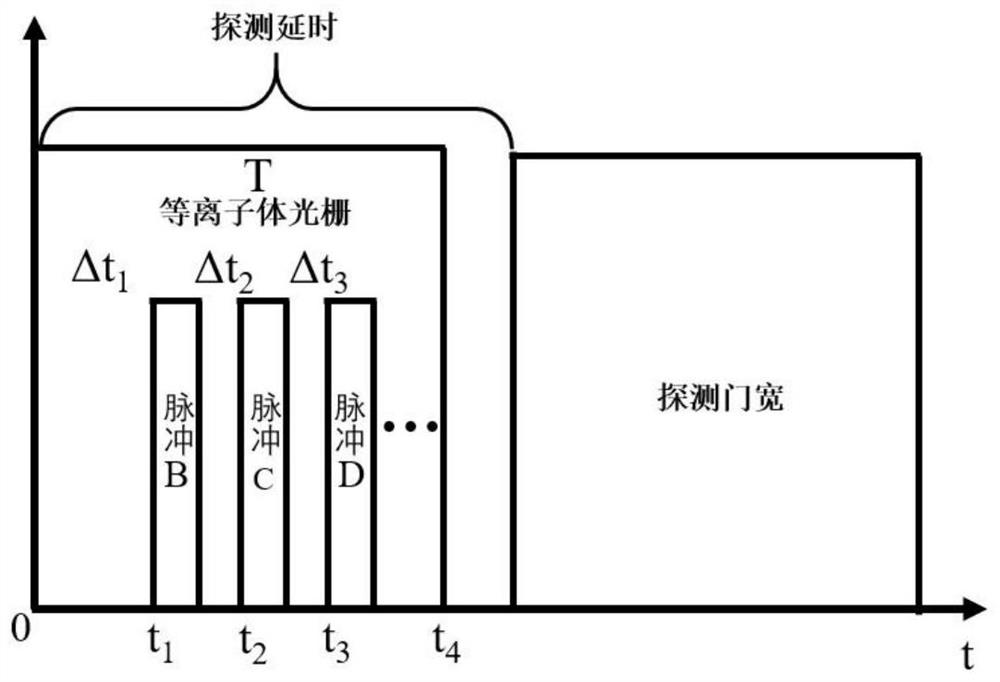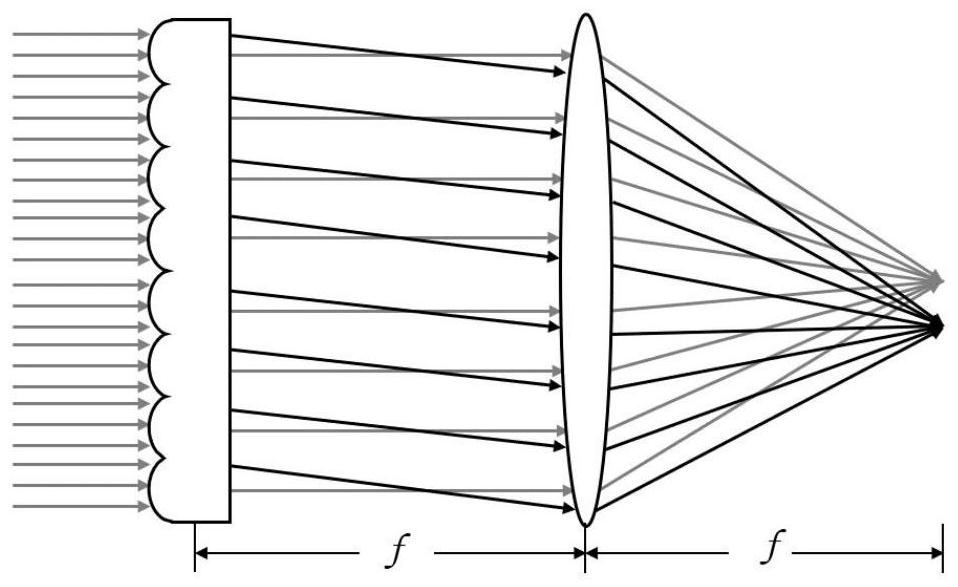Multi-pulse induced spectrum method and device based on femtosecond plasma grating
A technology for plasma and plasmoids, which is applied in the field of multi-pulse induced spectroscopy methods and devices, can solve the problems that the excitation effect needs to be improved, the cost is high, and is disadvantageous, so as to overcome the plasma shielding effect and the matrix effect, improve the signal strength, The effect of improving the signal-to-noise ratio
- Summary
- Abstract
- Description
- Claims
- Application Information
AI Technical Summary
Problems solved by technology
Method used
Image
Examples
Embodiment 1
[0041] Such as figure 1 Shown is a schematic diagram of the femtosecond plasmonic grating-based multi-pulse induced spectroscopy method. Pulse A in the figure is used to form a one-dimensional or multi-dimensional femtosecond plasma grating to excite the sample. Pulse B and pulse C are incident on the sample surface as post-pulse intervals with a delay. Specifically, there may be multiple post-pulses, which may be femtosecond pulses, picosecond pulses, or femtosecond plasma gratings, and frequency-doubled light may be used to form a two-color field to excite the sample. The angle between the incident direction of the post pulse and the femtosecond plasma grating is α and β, and the α and β are one or more of the first-order or higher-order Bragg angles. After the post-pulse is coupled with the plasma grating, the power density and electron density in the plasma grating channel are increased, and the length of the plasma channel is increased to effectively improve the detecti...
Embodiment 2
[0045] One way of forming the femtosecond plasmon grating is based on the focusing of an array lens. The specific schematic diagram of the focusing principle of the array lens is as follows: image 3 shown. The array lens is composed of sub-lenses with a diameter of several hundred nanometers to several millimeters arranged in a certain order on the substrate. Each sub-lens has a unique optical axis, and the entire array of lenses as a whole has a main optical axis. Each sub-lens Optical signals can be transmitted independently of each other without interfering with each other. When a beam of femtosecond laser is incident, the array lens splits the incident beam into many small units, and the energy of each unit can be approximated as uniform distribution. It can form a grating periodic structure after focusing with a common focusing lens.
Embodiment 3
[0047] Another way to form the femtosecond plasma grating is to split the beams, and then use multiple femtosecond laser beams to interact to form the femtosecond plasma grating after synchronization. For better illustration, the present invention provides a multi-pulse induced spectroscopy device based on femtosecond plasmon grating, the implementation of which is as follows Figure 4 shown. The femtosecond laser generates a beam of pulsed laser light with a wavelength of 800nm, a repetition rate of 1kHz, and a pulse width of 50fs. Then after passing through the beam splitter A, the primary transmitted light and the primary reflected light (pulse 1) are formed, and the primary transmitted light passes through the beam splitter B to form the secondary transmitted light (pulse 2) and the secondary reflected light (pulse 3). Pulse 1 light is converged by lens A after passing through delay line 1 (composed of high reflection mirror A-C and stepping motor A), and pulse 2 is conv...
PUM
 Login to View More
Login to View More Abstract
Description
Claims
Application Information
 Login to View More
Login to View More - R&D
- Intellectual Property
- Life Sciences
- Materials
- Tech Scout
- Unparalleled Data Quality
- Higher Quality Content
- 60% Fewer Hallucinations
Browse by: Latest US Patents, China's latest patents, Technical Efficacy Thesaurus, Application Domain, Technology Topic, Popular Technical Reports.
© 2025 PatSnap. All rights reserved.Legal|Privacy policy|Modern Slavery Act Transparency Statement|Sitemap|About US| Contact US: help@patsnap.com



